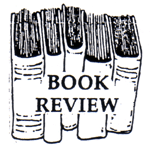|

This story was published in Radio Recall, the journal of the Metropolitan Washington Old-Time Radio Club, published six times per year.
Click here to return to the index of selected articles.
|
|
 THE GREAT RADIO SITCOMS THE GREAT RADIO SITCOMS
by Jim Cox
McFarland, 2008, 288 pp. ($55)
Order at www.mcfarlandpub.com
or phone toll-free: 800-253-2187
Reviewed by Maury Cagle
(From Radio Recall, December 2007)
In this, his tenth book about Old Time Radio, MWOTRC member Jim Cox has turned his attention to comedy–and radio’s long-lasting and very popular sitcoms. It’s his first book about comedy. Why this belated look at a major staple of radio? Cox notes that there are many books about individual comics, and other volumes on radio comedy as a whole, but he felt that the sub-genre of situation comedies was overdue for a detailed examination of its own.
He has chosen 20 shows for such treatment, ranging from The Adventures of Ozzie and Harriet to The Phil Harris–Alice Faye Show. Even the most dedicated fan of OTR in general, or of a particular show, will find something they did not know, and much that is enjoyable about their favorite characters, both in and out of the radio studio. There is also a fascinating listing of those actors who played key supporting roles, but did not gain the public attention as did the stars of the shows. For instance, Bea Benaderet and Gale Gordon were each in the cast of 13 series over the years. Their voices were instantly recognized by radio fans, but not always their names.
Each of the 20 chapters is organized with an introduction, followed by material on the show’s creator, producer, director; its writers; orchestra leaders; vocalists; sound effects technicians; announcers, those in the recurring cast; supporting cast members; sponsors; musical theme; information on its ratings; a breakdown of its network affiliations and air times; and–very important for OTR collectors—where archive materials are located, and how many program recordings are available.
This vital information is followed by a number of pages of background, with interesting bits of trivia (Ozzie Nelson was a gifted boxer and football player at Rutgers); the professional career of the leading character(s); thoughts of contemporary critics and current radio experts, which place the show into the social context of the time and the overall picture of radio; what gossip columnists were writing about the main character(s); some fascinating photographs; quotes; and a final summary of the place of the show in the spectrum of entertainment programming.
The overall feeling after reading a chapter, is that you have a very good idea of the show and its leading characters, and most of the historical information you need, all in a very few pages. Following the 20 chapters, there are 13 more sitcoms such as A Date With Judy, outlined in less detail in an appendix. Another appendix lists 170 radio sitcoms, with key cast members and broadcast dates.
As with his other books, Cox displays the knack of researching and writing what is essentially an erudite monograph and turning it into an easily read treat for OTR fans. The book is another in his series about selected aspects of radio that, taken together, will help present and future scholars and fans understand more about the social and economic giant that was radio in its golden years.
The book is handsome and appears to be well-edited, although I noticed one minor error: in the caption under a picture of Jim and Marian Jordan, it refers to Fibber McGee and Molly’s address as “39 Wistful Vista.” That was down the block from the actual address at number 79, where lurked the ominous hall closet.
|